Watch the Insanely Intricate Process Behind Decorative Plaster
For most of us, a home with crown molding is a dream. In the workshop of Foster Reeve, that's just the tiniest tip of the iceberg. The company, founded by Reeve in Brooklyn over 30 years ago, is the creative and technical genius behind some of the most intricate detailing in the world's most extravagant homes.
In a multi-level warehouse in Brooklyn's Greenpoint neighborhood, the company's employees oversee the making of hundreds of moldings, panels, medallions, and other decorative elements cast in plaster. "One of plaster's greatest strengths is that it is a malleable material," says Reeve. "You can do all kinds of things with it that you can't with wood."
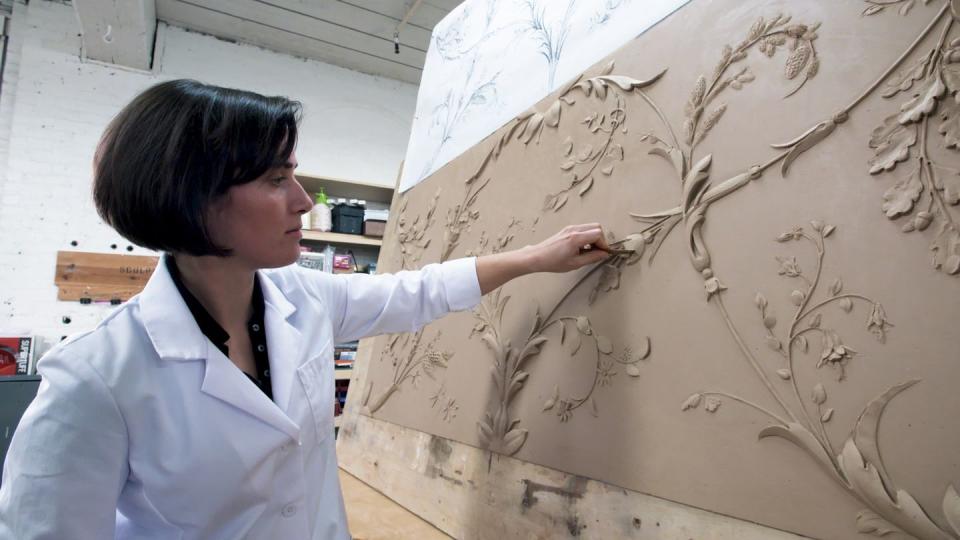
Like much of the design world, it all begins with a sketch. Head artist Emily Bedard will meet with an architect and designer to translate a rough idea or template into a detailed drawing.
Next, she and her fellow Foster Reeve sculptors move to clay, molding three-dimensional versions of the drawing, which will then be cast in silicon to form the molds that will make the final plaster elements.
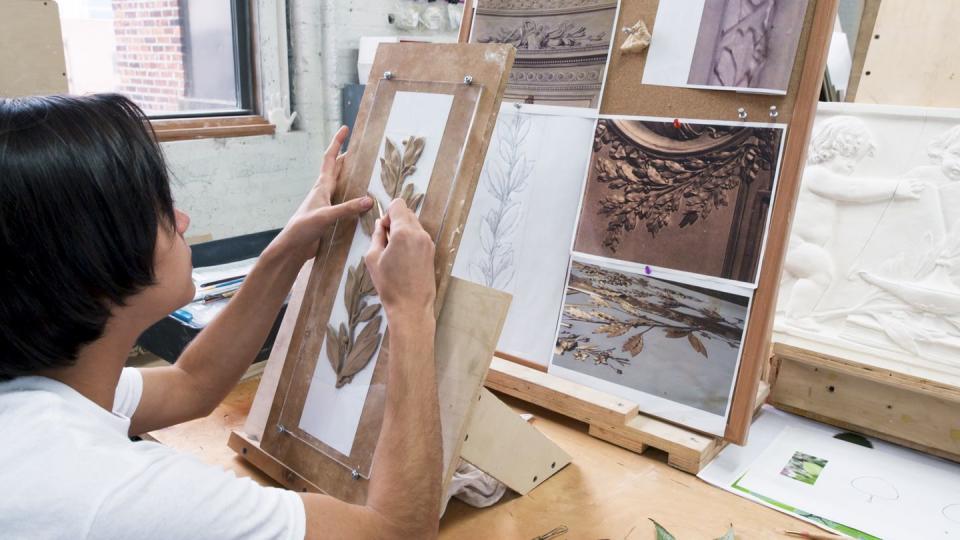
The process is a deliberately slow one. "We'll return multiple times to a piece," Bedard says of the works in clay, several of which are set up in the studio in various stages when House Beautiful pays a visit. At one, a group of young artisans are playing with real leaves, pressing them into clay to get realistic lines. Another piece is set on an easel facing a wall of completed casts; Bedard might take an element from one of these motifs and add it to her in-the-works project.
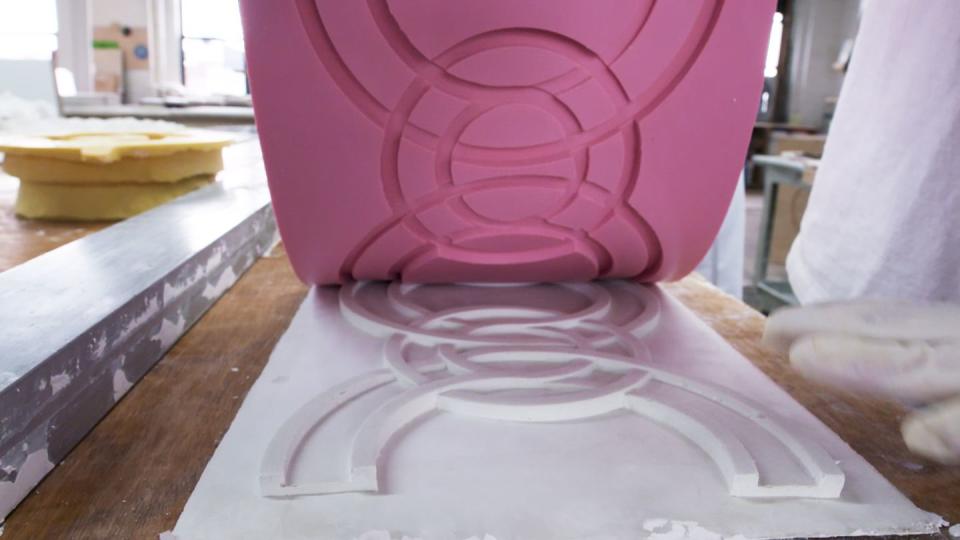
As far as classical inspiration goes, there's no shortage of it at Foster Reeve. The studio is the caretaker of an impressive collection of historic plaster casts, which the Institute for Classical Architecture & Art obtained after the Metropolitan Museum of Art gave them up in 2004.
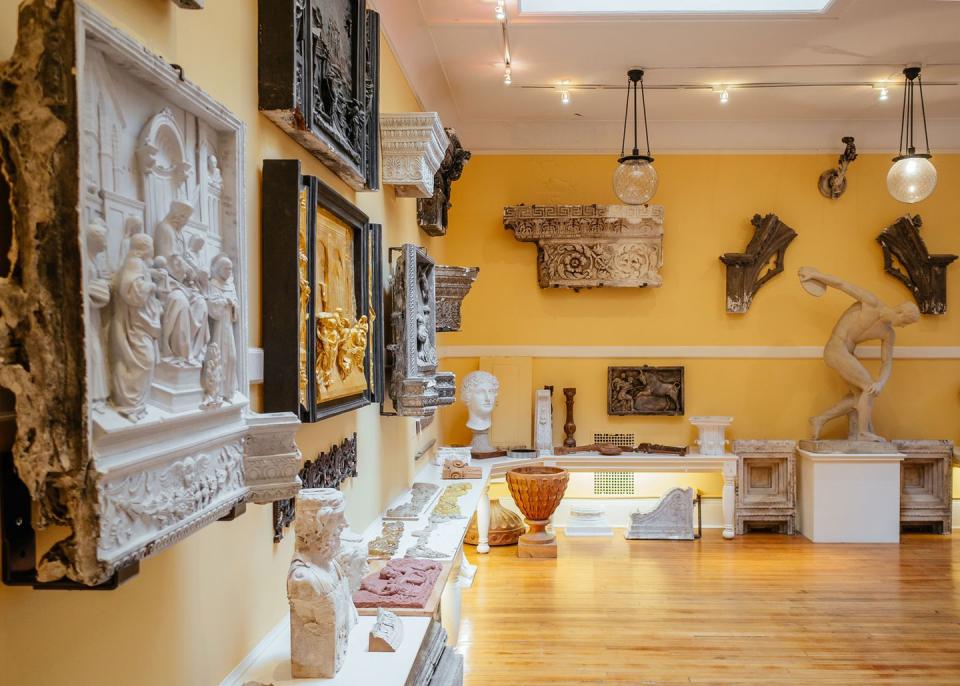
"These are the items that, before more recent acquisitions, would have actually been on display at the Met in the 19th century," ICAA president Peter Lyden tells House Beautiful. This particular collection was acquired between 1883 and 1895 under the advisement of the New York chapter of the American Institute of Architects; the first casts went on display at the Met in 1889.
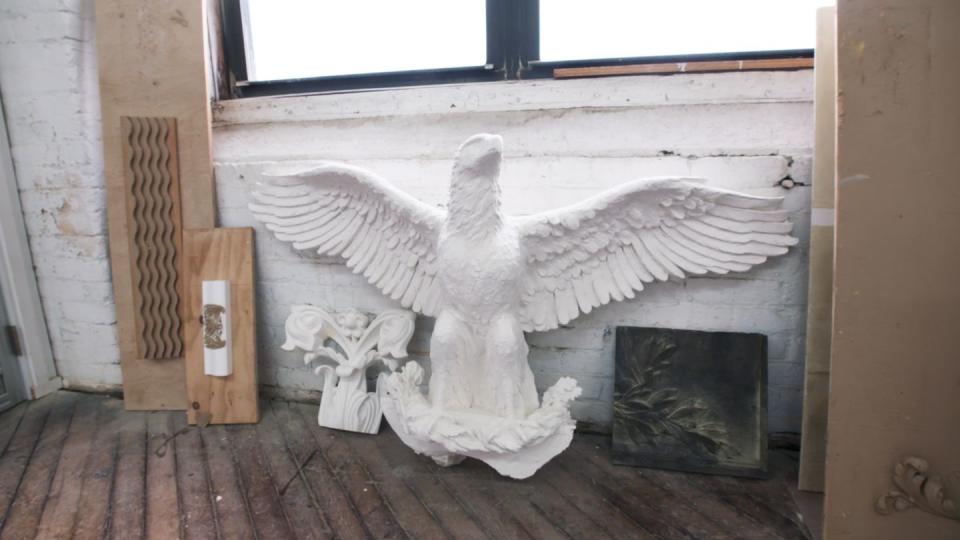
In the Foster Reeve studio, Bedard and her colleagues are tasked with repairing the casts, a rotating selection of which is continually on view at the ICAA's Manhattan headquarters. The ones not on display are sprinkled throughout the Foster Reeve studio and provide endless inspiration for current work. Artisans may take an inch of a scroll detail, or the pattern of a trim, and replicate it in a new design. In a recent project that called for an eagle set in a pediment, Bedard adapted a historic example for a strikingly detailed bird.
It's a living example of history being continually, freshly, reinvented.
Follow House Beautiful on Instagram.
You Might Also Like

